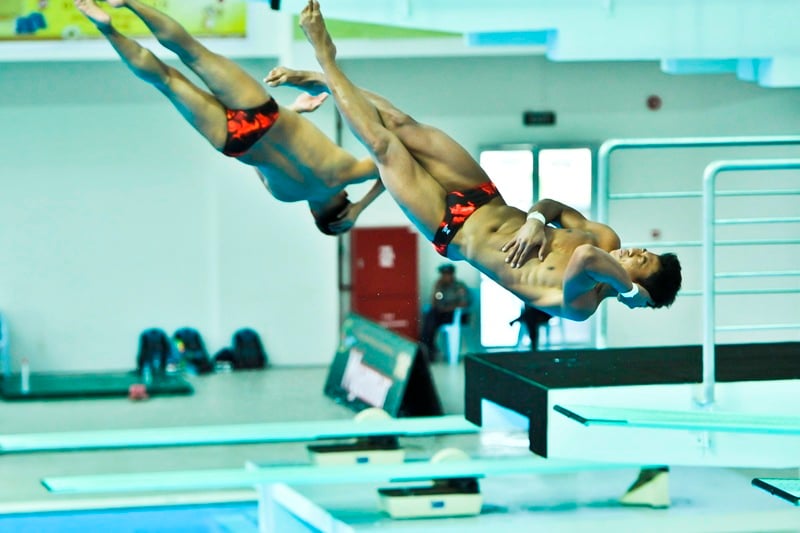Judging criteria for competitive diving

Image credit: Mooken Chandran/SportSG
Judging in a diving competition follows certain guidelines in order to establish fairness and maintain an equal standard for all divers. It may be true that it is a subjective sport and each judge may find a particular element of a dive more appealing than another, but the scores should reflect a fair assessment of the dive performed.
Judges evaluate the following parts of a dive to determine an overall score:
Five basic elements of a dive
When judging a springboard or platform dive, five basic elements need to be considered with equal importance before awarding a score
1. Starting position
From the moment the diver establishes his starting position on the diving board or platform, a judge will look out for good body posture.
The diver may stand facing the water for forward approaches, or the diver may have his back to the water at the end of the springboard or platform for backward approaches and when in preparation for a forward or backward handstand take-off on the platform. Depending on the dive, the diver should be standing straight with head erect. The arms should be straight and steady in a position of the diver’s choice.
2. Approach
In diving, there are two different approaches:
Forward approach:
For springboard, a judge will ensure that there are at least three steps in the approach and a hurdle. For platform, both a running approach with a small skip and a standing forward approach are acceptable.
Back approach:
For both springboard and platform, a judge will look to see that the diver is balanced on his toes, with his heels off the board or platform . His body should be straight and his shoulders should be in line with the hips.
3. Takeoff
At the end of the board or platform, a judge will determine if the diver’s body is balanced, with two-feet initiating the takeoff from the tip of the board. For platform diving, a one-foot takeoff is accepted.
4. Flight
While the diver is in flight, judges will determine the height of the dive, the rotation of the somersaults and twists, as well as the position of the dive - tuck, pike, straight or free.
5. Entry
Besides the “rip” entry (which is an entry with little to no splash), judges will use the position of the arms to determine if the dive is vertical.
Head-first dives:
Judges look to see if the arms are above the head and in-line with the body.
Feet-first dives:
Divers should have their arms tight by the sides of the body.
In both cases, judges want to see a clean, or low-splash entry – the cleaner the entry, the higher the score.
Criteria for Judging a Dive
Dives are awarded points on a scale of 0 to 10 in ½ point increments.
The standard to be considered when awarding points in a dive is as follows:
● 0: Completely Failed
● ½ – 2: Unsatisfactory
● 2½ – 4½: Deficient
● 5 – 6½: Satisfactory
● 7 – 8: Good
● 8½ – 9½: Very Good
● 10: Excellent
To receive the latest updates on the happenings in the Singapore sports scene, or to find out more about some of the latest programmes on offer at ActiveSG, like our Facebook page here.



